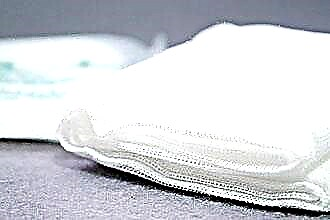A runny nose is a protective reaction of the body that occurs in response to exposure to pathogenic agents, which can be viruses, bacteria, allergens, dust particles. Most often, it is a symptom of infectious diseases caused by viral pathogens.
 Since this process bears a protective function, the treatment of the common cold is inappropriate. Otherwise, incorrect actions can lead to a decrease in local immunity and a more severe course of the disease. The treatment of rhinitis can be discussed in cases where its severe course contributes to the development of complications of acute respiratory viral infections such as otitis media, sinusitis, bronchitis. In addition, pronounced symptoms can lead to a deterioration in the patient's general condition, interfere with the patient's sleep and rest. In this case, it may also be necessary to carry out measures aimed at reducing the swelling of the mucous membrane and combating rhinorrhea.
Since this process bears a protective function, the treatment of the common cold is inappropriate. Otherwise, incorrect actions can lead to a decrease in local immunity and a more severe course of the disease. The treatment of rhinitis can be discussed in cases where its severe course contributes to the development of complications of acute respiratory viral infections such as otitis media, sinusitis, bronchitis. In addition, pronounced symptoms can lead to a deterioration in the patient's general condition, interfere with the patient's sleep and rest. In this case, it may also be necessary to carry out measures aimed at reducing the swelling of the mucous membrane and combating rhinorrhea.
Nasal drops for a cold
Drops used to treat a cold are divided into funds that contain
- vasoconstrictor component;
- salt solutions;
- oil solutions;
- solutions containing an antibiotic.
A separate group includes immunostimulating agents presented in the form of nasal drops. They have only an indirect relationship to the reduction of this symptom, reducing the duration of treatment, preventing the development of complications.
The value of saline solutions
The simplest and safest remedy is a saline solution for rinsing the nose, the recipe for which consists of two components, boiled water and table salt. The use of such a tool contributes to the liquefaction of discharge from the nose, easier emptying.
The most important use of this solution is in children. This is due to the peculiarities of the anatomical structure of the auditory tube in a child, since it is wider and shorter than in adults. This promotes the throwing of mucous discharge and pathogenic microorganisms from the nasal cavity into it. The consequence of such actions is the development of inflammation of the auditory tube, and subsequently, otitis media.
Rinsing the nose with saline for children leads to thinning of mucus, prevents the development of stagnation in the auditory tube, which means it is the prevention of complications of acute respiratory viral infections.
The preservation of the discharge in a liquid form also contributes to the fact that the nasal mucosa does not dry out, remains moist. This prevents the formation of crusts, the accumulation of which makes nasal breathing difficult.
A child in such a situation is forced to breathe through his mouth. The result is that during sleep, the infectious agent enters the body through the dry throat, trachea, and leads to the development of bronchitis and pneumonia. Therefore, treatment for a cold should help maintain a liquid consistency of mucus from the nose.
Pharmaceutical preparations "Aqua Maris", "Morenazal", "Marimer", physiological solution can be used as the means used for these purposes. A similar remedy can be prepared at home. How to make a nasal saline solution for a child?
Solution recipe
 To prepare the required solution, boiled water and table or sea salt are taken. (If sea salt is purchased outside the pharmacy chain, it should not contain dyes or aromatic additives that can provoke the development of an allergic reaction).
To prepare the required solution, boiled water and table or sea salt are taken. (If sea salt is purchased outside the pharmacy chain, it should not contain dyes or aromatic additives that can provoke the development of an allergic reaction).
The proportion of the saline solution for rinsing the child's nose is one teaspoon of salt per liter of water.
After stirring the salt and cooling the liquid, the resulting nasal rinse saline is ready to use.
Tactics of the procedure
The introduction of fluid into the nasal cavity is carried out under pressure. For this, a medical bulb, a syringe without a needle, or a used clean bottle from other drops can be used. There are special rules for how to properly rinse your child's nose with saline. They are also due to the structural features of the auditory tube.
By performing such a procedure in a horizontal position of the child, it is possible, with excessive efforts and pressure, to promote the throwing of contents from the nasal cavity into the auditory tube or even into the tympanic cavity. Such actions will certainly cause the development of otitis media. The basic rule is that nasal irrigation is recommended to be carried out in an upright position of the child or with the head elevated. Instructions for the use of both pharmacy products and those prepared at home say that it is dangerous for a child to rinse the nose with saline in a horizontal position.

Rinsing the nose is carried out alternately from one side and the other. Only after waiting until the water has already flowed out of one half of the nose, they begin to rinse the other. It is recommended to carry out two or three such procedures per day. The temperature of the solution should correspond to the body temperature of the child, that is, it should be about 40 degrees.
If the patient is prescribed any other nasal agents, they are instilled after rinsing the nose.
Preventive use
This tool can be used not only as a therapeutic measure, but also for the prevention of ARVI. During an epidemic, when the number of infected people is growing, and the concentration of the virus in the surrounding space increases, such preventive actions contribute to the fact that the nasal mucosa is constantly in a moist state. The causative agent of influenza or other respiratory infections prefers dry, warm air. Thus, regular irrigation of the nose prevents the penetration of the virus into the body through the entrance gate.



